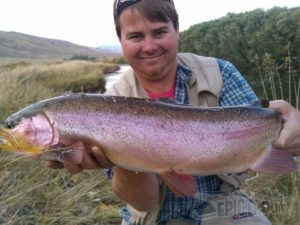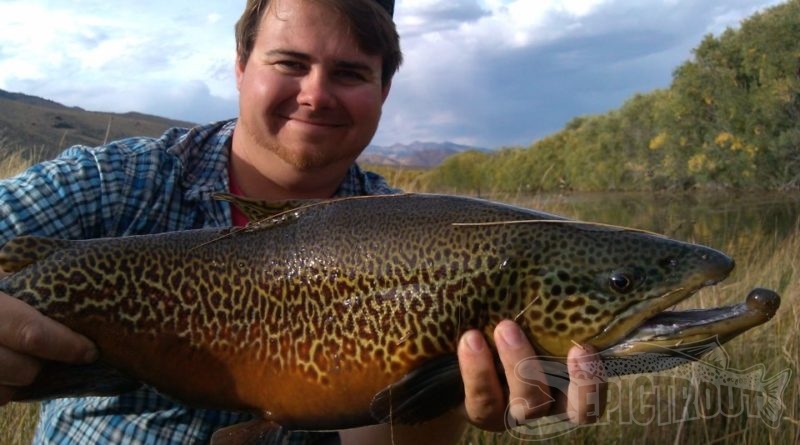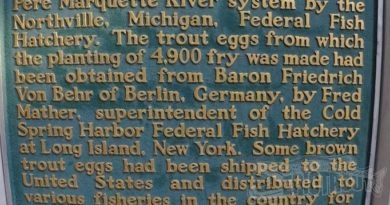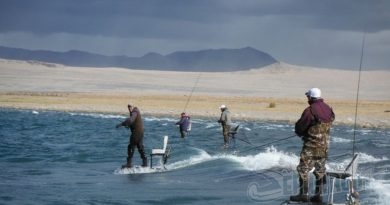Wild Trout of the West
Growing up in a fishing family, I’ve been fishing since I was quite a young lad. My father has passionately fished the Truckee river, just like his dad, and both of my great grandparents. one of my grandfathers was fishing Pyramid lake since he was stationed here after the Korean war. Even with a long line of fishing in my family, there were many things I never learned, from fly fishing, that there are other types of fish other than beautiful trout, and Catch and release.
To many fisherman in North America, Catch and Release are 3 very dirty words. The action of releasing your prize catch is seen as insanity! Growing up, we always keep our nice catches. we did turn back the little fish, but when my dad and I would go to the river, he would catch 3-5lbs rainbows and Browns almost every trip, and you better believe we took’em home every time. I still see pictures everyday on all my favorite fishing websites of people taking their prize catch.
Several years ago, something’s in my life changed, and fishing changed as well. it went from being something I did 4-5 times a year, to something I did 100 times a year. I embraced the wonderful soul soothing of standing at the river’s edge, and all that it had to offer me. as I changed, I began to learn more about fishing, my passion grew, and my want for knowledge grew with it. I soon started a Facebook page dedicated to my fishing, called the Truckee River Fisherman. I began catching so many beautiful, large trout, my fridge was never empty. Every time I took one of those beauties though, I realized I was leaving something behind. I decided it was time to set these wonderful fish free, and not look back.
From that day I let my first 4lbs rainbow go, I’ve never looked back. I’ve set every single big trout I’ve caught since free. that’s right, Trout as large as 10lbs, released. I always thought I’d never let go a trophy, a fish above 10lbs, but now I have. My brother, my avid fishing partner, never imagined setting a 13lbs rainbow free, but even he’s adopted it. we’ve become self made fly fisherman, experts in both spin cast and fly, and more so on how to release a fish without injuring them.
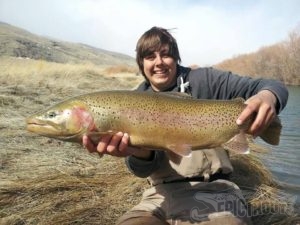

You see, out west, here in the beautiful Sierra Nevada Mountains, our rivers , creeks and lakes support an amazing variety of wild, and sometimes native trout. A large swath of the U.S. only knows planted trout. Not here, it’s a different story out west. Rivers like the Truckee support wild Browns, and Rainbows, reaching 10lbs in size. The East Walker river has an amazing wild Brown trout population. We also enjoy minimal fishing pressure, with our rivers wide open and peaceful. This is all the more reason to learn good conservation practices. this day in age, it important to conserve our resources, including trout!
Why catch and release? It means larger trout, which are better breeders, and carry better genes will continue to reproduce. It means wild trout will still be out there. it means more fish for ever fisherman, and bigger fish for everyone. If guys who are the best fisherman kept all the catches, many rivers would be totally broken. Stocked trout are nothing like wild trout! Good handling practices are easy, and very rewarding!
here are the basic steps. I would recommend learning everything there is to know, but this will help you get started!
1. Barbless hooks- to me, the jury is still out on which is better, treble or single. I find barbless single easier to get out, but often going deeper in the mouth, while treble tends to stay towards the front. but always pinched barbs!
2. quick fights! -don’t be afraid know it seems odd, but I’ve learned that worrying about losing your big ones tends to not to help. stay calm, get the fish in. the longer you fight a fish, the more likely it is to die. during the fight, fish build up anaerobic acids, and once those become too great, the fish will die later, as their livers cannot handle it all.
3. NET! always net your trout. there are plenty of C&R nets, but a good one will be rubberized. this will ensure minimal damage to a fishes protective slime coating.
4. keep them in the water- don’t remove the fish from the water. once you’ve netted them, keep those fish in the water. try to find an nice, shallow, moving water area, to get your picture.
5. photo time- be quick about it. everyone, even us, love nice shots. but be prepared, have the camera ready, find the best lighting angle, all before you pull the fish from the water. sometimes you can get away with holding the fish at the water’s surface, but not always. just make sure the fish is removed for less than a minute!
6. try to avoiding dropping the fish on the ground, or letting him beat on the rocks in the water. be gentle, it will help ensure the trout receives as little stress and damage as possible.
7. make sure the fish is revived, and release into a slower, but moving current, if possible.
Practice makes perfect. there is a ton of good how to videos on YouTube. we didn’t learn overnight, in fact, it took us months to get into a good routine. now it’s down to a science for us, it’s all second nature. it’s just a matter of keeping in mind that we are trying to minimize how many fish we kill, so that at the end of the day, our footprint is small. We love fishing so much, that it’s hard to imagine a world with no wild trout. Imagine knowing there’s barley any “big ones” left. I think it’s much better to imagine rivers full of wild trout, teeming with hogs, and beauties!
the biggest thing is to be aware of what you’re doing, excitement and adrenaline can be overwhelming. when you let that fish go, he will be around another day, for the next generation of fisherman, or maybe for you again, when he’s bigger! its more rewarding than you might think, letting that hog go, than taking him home!
Shane Ritter AKA Truckee River Fisherman
